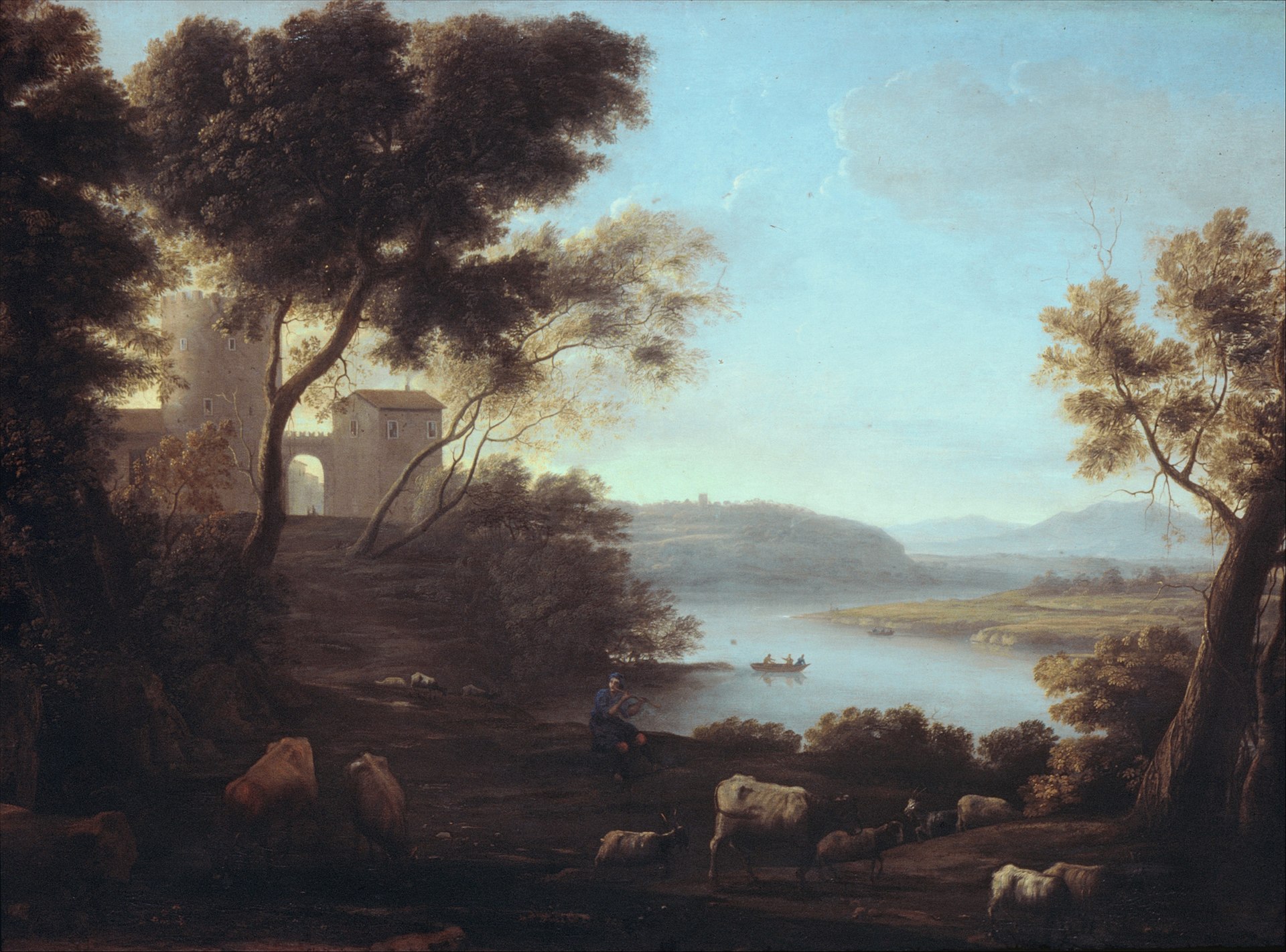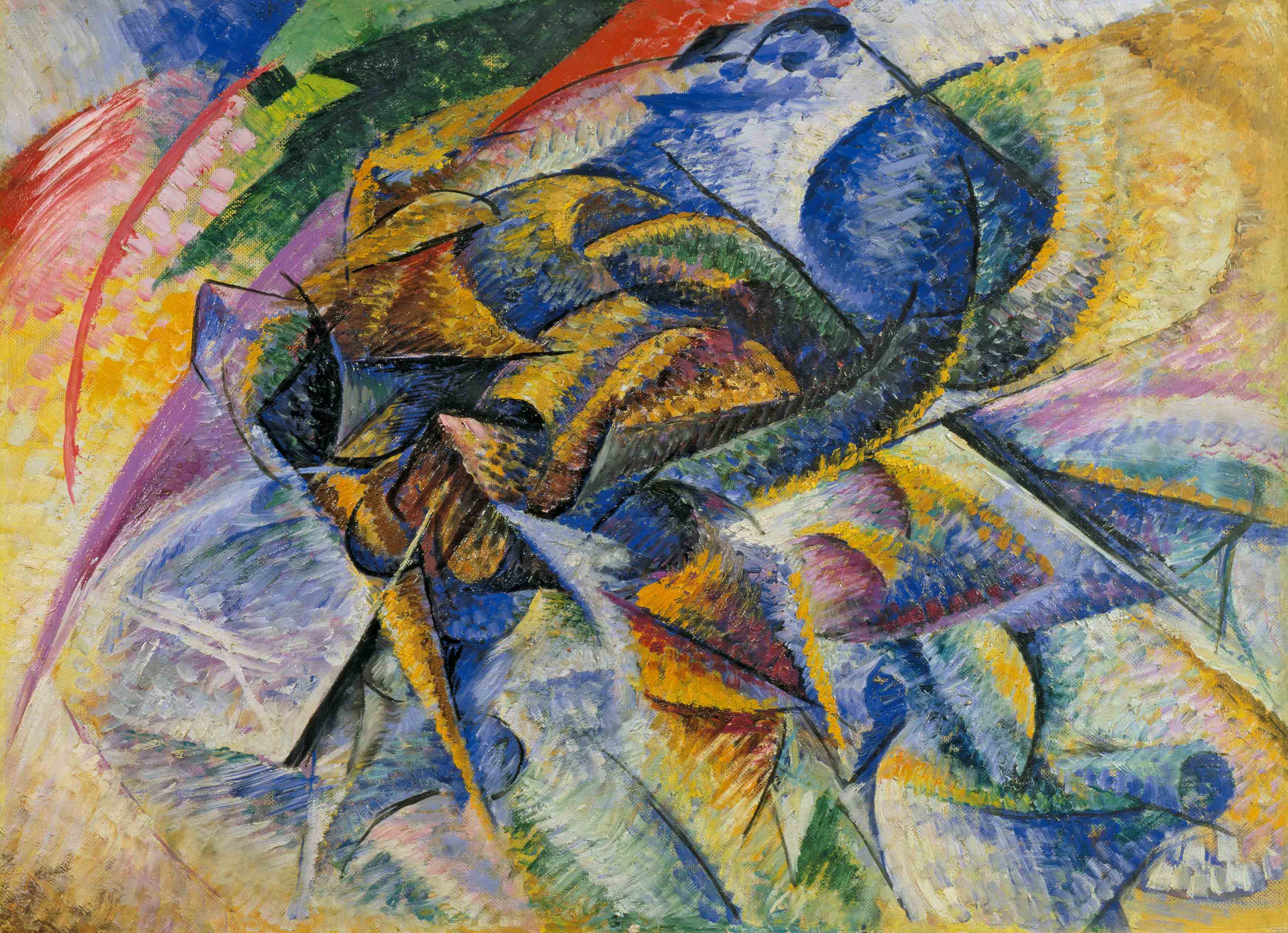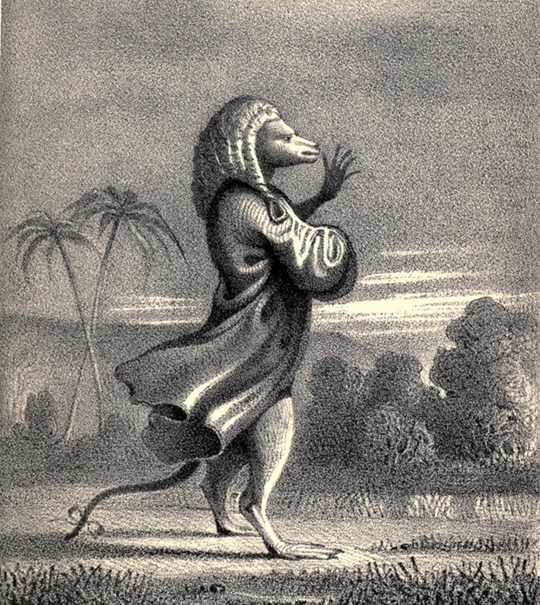The following is the second installment of a three-part series. The first one can be found here, the second one here. Translated by Philipp Schlögl.
Poetry and Religion: Fragment of Philosophical Letters
1) In the Fragment of Philosophical Letters, Hölderlin defines this character of repetition more precisely, which proves to be central to his understanding of religion. In contrast to a mere “mechanical connection” (TS 11/EaL 235), the “machinery” course (TS 10/Eal 234), i.e. a mere repetition, he speaks of spiritual life, “where he [man], as it were, repeats his real life” (TS 12/EaL 235-236).
This form of repetition has a free character in analogy to the aesthetic intention of imagination,[1] which, however, must not be reduced to arbitrariness. The relation to real nature and its conceptual definition (Kant) or the relation to real life (Hölderlin) is preserved. The free repetition that characterizes life is furthermore not in opposition to necessity or unconnected to it: Hölderlin speaks of “more infinite, more than necessary relations in life” (TS 12f/EaL 236).
It thus has an excess of meaning over that which can be represented in necessary reference to or entanglement with one another. In extension of the determinations from Being Judgement Possibility one could say about the connection of the categories of modality: possibility is a free repetition of reality and a transgression of necessity; thus, reality and necessity can appear in a new context.
It is decisive that this free repetition (or, as Hölderlin will later say, free imitation of art, freie Kunstnachahmung, TS 34) of real life “can, admittedly, also be thought, but not merely thought” (TS 13/EaL 236). Hölderlin names two deficits of this: On the one hand, the intuition lacked only in thought the moment of particularity, i.e. the non-determinable way in which the general would become a “peculiar case” (TS 13/EaL 236).
The consideration remained in the realm of necessity and could not express the “more than necessary relations in life” (TS 13/EaL 236). On the other hand, the indication of the conditions of possibility for the act of repetition, the indication of its logical structures must not be confused with repetition itself: The laws of “that more than infinite connection” are only “the conditions which make that connection possible, and not the connection itself” (TS 13/EaL 237). The repetition of reality, which exceeds necessity, thus refers to an excess of meaning, which as such only exists if it finds a form of representation.
A first consequence of this is that repetition itself, in order not to remain merely in thought, requires a space in which it can take place, for which Hölderlin coins the concept of the sphere in the Fragment of Philosophical Letters. It functions as a counter-concept to the subject-object relation, which contrasts a recognizing subject with an object as an object of knowledge or processing. In contrast to this, the sphere stands for an approach to the world as an intersubjective, linguistic, historical and cultural mediation, i.e. for a spiritual access to the world.
The point is to regard the relations (things, objects …) “not so much in themselves”, that means at this point abstractly, merely in thought, “as with regard to the spirit that governs the sphere in which those relationships take place” (TS 13f/EaL 237). In contrast to a finite perspective, the spirit points to a “more infinite connection” (TS 14/EaL 237), to an intuition of the “tender and more infinite relationships” (TS 14/EaL 237), i.e. to a perception of shadings and infinite (living) differentiation, as the “iron concepts” (TS 13/EaL 237) of Enlightenment, but also of morality and etiquette, are not able to get into view.
In Kantian diction, one could say that this complexity cannot be grasped either by judgements of knowledge or by moral judgements; it is about the space of the representations that are, in the aesthetic ideas, associated with them and can never be depicted exhaustively. With the concept of the sphere, Hölderlin has also found an answer to the question of the unification of subject and object, as it preoccupied him in the letters quoted above. The unification cannot take place abstractly, but always takes place in intersubjective-historical mediation and must find a language.[2]
2) For Hölderlin, religion is the place where this form of perception takes place in a particular way. It can take on this role because it is able to give an expression, a symbolisation to the difference around which the subject is constituted instead of determining and reducing it to unambiguity. Hölderlin sees this difference as an indissoluble tension between the discreet and the continuous. He speaks of “intellectual moral legal relationships on the one hand, and on the other hand, physical mechanical historical relationships” (TS 14/EaL 238).
The first series of concepts stands for man in his individuality, personality and morality, i.e. in his discretion, the second series of concepts for his involvement in general relations, contexts, determinations, i.e. for nature or continuity. These two areas never coincide – individuality repels itself again and again from the general and cannot be fully represented in it; contrarily, individuality cannot produce the side of its natural constitution, continuity and integration out of itself in autonomous self-activity. The subject exists as the difference or delay of those moments that never coincide synchronously: in the union of the two series, Hölderlin defines religion as “intellectual-historical, that is, Mythical” (TS 14/EaL 238). It is able to balance the two elements in their tension without dissolving them into a comprehensive point of unity.
The intellectual-historical, which constitutes religion, or which is able to unite religion, expresses itself mythically, i.e. in a certain form (Gestalt), language, narrative.[3] This narrative is able to aesthetically unite those two logically separated aspects, that of singularity and continuity, as well as that of the separation of morality/freedom and nature (which echoes in it). However, this unification does not take place in the sense of an addition of existing parts, or in an outsourced point that is able to represent both, but in their repetition.
On the one hand, man remains an empirically determined being and is subject to the causality of nature, and on the other, he acts morally freely and refers to a causality of freedom. Hölderlin’s point is that in religion he sees the repetition of both of these moments, of nature and morality. Religion is neither part of being (Sein) nor of ought (Sollen), i.e. it is neither an evolutionary-biologically explainable function (a mere part of nature) nor derivable from the realm of its moral action (subordinated to the freedom of its self-legislation), but their opening to possibility in which they remain preserved.[4] In the repetition of these two sides, religion is their utopian moment that leads beyond their necessity.
From Hölderlin’s point of view, two aspects are thus essential for religion. To come back to Kant, both have their intellectual background in the multiplicity of aesthetic ideas that accompany logical judgment and cannot be restricted by a determined concept: Firstly, the motif of the sphere points to an infinitely differentiated form of living mediation, which cannot be grasped either in the stringency of logical judgements about reality or in the absoluteness of moral judgements. Secondly, the motif of repetition points to the opening of this living space of mediation to a more than necessary, utopian future.
3) In order to explain this structure in more detail, we have to look at how the connection between religion and poetry (art) is structured in this understanding. Hölderlin gives the two areas of poetry and religion a more precise definition, by always reverting to the other: poetry can be differentiated more precisely by referring to the ability of religion to balance the two aspects of the singular and the continuous. Depending on the form of the relationship between the two poles, it is defined as the “epic myth”, the “dramatic myth” (TS 15/EaL 238) or the “lyrical-mythical”[5] (TS 15).
In the Fragment of Philosophical Letters Hölderlin gives some brief hints as to what this means, but without elaborating more precisely. One would have to pursue this question further by including Hölderlin’s poetological writings in the narrower sense, thereby including the crucial connection between poetry and religion which can especially be found in the Fragment of Philosophical Letters.
Conversely, the lively differentiation that Hölderlin associates with religion (sphere), and the repetition associated with it as an opening to new possibilities must be “not merely thought” (TS 13/EaL 236); it must find an expression that art, especially poetry, is able to grant. Hölderlin uses the terms “Stoff” (“subject-matter”) and “Vortrag” (“presentation”, TS 14f/EaL 238) for this purpose. Religion cannot be reduced to its content, its subject-matter, but always requires its execution, the presentation. This is never pure expression of content, but always already cultural-artistic mediation.
Religion represents a repetition and free adoption of gestures, motifs, elements of art, poetry, narration, painting, sculpture, music and architecture. It transforms these elements and, conversely, lets itself be transformed by them. Its subject-matter or its content is exactly in this transformation.
This reference of religion to art, i.e. this repetitive adoption of its elements, is summarized by Hölderlin in the beautiful sentence: “Thus, all religion would in its essence be poetic.” (TS 15/EaL 239) It is thus not replaced by art or traced back to it, but it is essentially connected to it. In the repetitive adoption of its elements, religion places them in a new tension and opens them up to further turns and interpretations. In this art is not functionalized as if it had merely to serve religion to symbolize its contents; rather, the anarchic potential of art is capable of breaking any functionalization.
To Honour God “in poetic representations” – the question of God
The question of God cannot be thought beyond the cultural-artistic mediation shown by the referentiality of religion and art to each other. Hölderlin therefore speaks in echo of the mythical, i.e. intellectual-historical character of religion, of the “God of the myth” (TS 15/EaL 238) – “where everyone honours his own god and all honour a common one in poetic representations” (TS 15/EaL 239). In the last chapter it is attempted to interpret these brief statements about God taking the previous considerations into account.
1) In a thinking of the sphere, which instead of unilinear causal subject-object relations seeks to take into account an intersubjective, linguistically, historically and culturally shared space of mediation, it would be obvious to think of God, the Absolute, as the continuous and complete mediation, thus as the totality of all relations. This is certainly not wrong, but it is only one moment.
Hölderlin, referring to the higher or divine laws, speaks of “more infinite, more than necessary relations in life” (TS 12f/EaL 237). Thus, the necessary relationality of all components of the sphere, the totality of its conditions and its necessity, is not the ultimate dimension to think the absolute. The “infinite connection” of life rather adopts the totality of its conditions in itself and arranges them in free repetition – contingently.
Hölderlin gives an indication that the closedness of a network of references (totality) is not the ultimate horizon of intuition where he notes that every general that does not particularize itself (sich besondern), does not limit itself and does not go down in contingent history, remains abstract (cf. TS 13/EaL 237). God is not only the symbol of complete mediation in itself, necessity and thus unity of the sphere, rather he stands precisely for the contingent particularization and a radical individualization, and thus for reality: “everyone honours his own god and all honour a common one in poetic representations” (TS 15/EaL 239).
But also this individualization, which has nothing to do with indifference, but with the emergence of a moment that repels itself from the generality of the law and the continuous mediation into the contingency of reality, does not have the last word and must not be fixed. A “human being can indeed also put himself in the place of another, can make the sphere of the other his own sphere” (TS 10/EaL 234). Hölderlin speaks of the need of men that their different kinds of representation of the divine join one another, and thus to give the limitedness which every single kind of representation has, and must have, its freedom, in that it is contained in a harmonious whole of kinds of representation (TS 11/EaL 235).
The particularization of the absolute does not represent an end point, but rather leads to processes of translation that are able to suspend the limitation of the particularization without dissolving the particular or again subjecting it to an abstract general. These forms of translating the spheres into one another also represent a form of free repetition. No translation is mechanical repetition or transmission according to a functional tool. It always requires the moment of “free imitation of art” (TS 35/EaL 272). The translations can therefore be associated with the utopian aspect of possibility.[6]
2) The absolute finds its discursive representation in the moments of totality, particularization/limitation and translation. In the sense of the categories of modality, totality corresponds to necessity, restriction corresponds to reality and its repetition in processes of translation corresponds to possibility. In a (Christian) theological discourse this tripartite development of representation of the absolute should be translated into addressing oneself in the name of the Father through the Son in the Holy Spirit.
3) The present considerations have their pivotal point in the central meaning of the category of possibility as the dynamizing moment of the categories of modality. In repetition, it proves to be an opening of reality to an unforeseeable future and unpredictable meanings. It allows the infinite wealth of ideas to emerge, which transcend the stringency of the logical and the necessity of moral judgements without destroying them.
However, this opening must not be “merely thought” (TS 13/EaL 236), but requires free expression each time anew (“presentation”, TS 15/EaL 238). “Thus, all religion would in its essence be poetic” (TS 15/EaL 239) and therefore would not exist before and independently of its poetic and artistic (one could add: liturgical) forms of expression. At this point, these reflections would have to be continued on the basis of Hölderlin’s poetry in the form of the interpretation of some concrete poems.
Jakob Helmut Deibl is a post-doctoral fellow at the Department of Systematic Theology in the special field of Fundamental Theology at the Faculty of Catholic Theology at the University of Vienna. His dissertation examined Gianna Vattimo’s suggestion of a transformation of the biblical motives of incarnation and kenosis (the incarnation and the relinquishment of the Divine Logos) with regard to a reinterpretation of Europe emphasizing the motive of the weakening of strong structures and noetic claims of absoluteness.
_________________________________________________________________________
[1] Cf. Kant, KdU § 49, 253/Kant, Critique of Judgement, 185.
[2] Bruno Liebrucks talks about a subject-subject-object-relation („Subjekt-Subjekt-Objekt“-Beziehung; Bruno Liebrucks, Einleitung. Spannweite des Problems. Von den undialektischen Gebilden zur dialektischen Bewegung (Sprache und Bewusstsein, Bd. 1), Frankfurt am Main 1964, 3).
[3] This has nothing to do with a form of re-mythologization in the sense of abandoning rationality and a decline towards narratives that cannot be questioned.
[4] One could also speak with Hegel in mind of a relationship of Aufhebung in the threefold sense of overruling, preserving and elevating to a higher level.
[5] Translation: Philipp Schlögl.
[6] I owe the reference to the importance of translation as an integral moment of the question of God to Isabella Guanzini.




